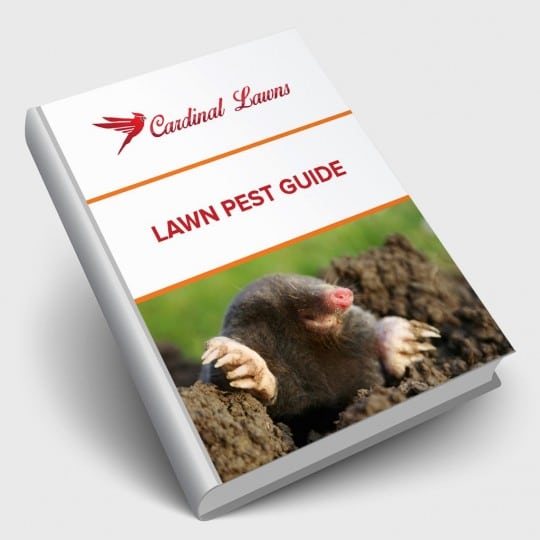Identifying Chinch Bugs
What to do When You Find Them
Posted
June 22, 2023

When it comes to lawn pests, a little bug can make a big mess. Chinch bug control is not easy but it helps to properly identify and prevent this tiny pest.
Identify Chinch Bugs
Since these lawn pests are tiny—less than a quarter inch—you may not notice them until they’ve already done some damage to your lawn. Young nymphs are typically a reddish color that turns black in adulthood. Adult chinch bugs also feature an X-shape marking on their back. Some chinch bugs are covered in fine hairs giving them a furry appearance.
Chinch bugs prefer hot, dry conditions which is why you’re most likely to see them in July and August. They’ll bask near sun-baked surfaces, such as your driveway, sidewalk or other hardscaping. You’ll also find them in the thatch layer on top of your grass. This is where they will feast by piercing the blade tissue and sucking out the juices. They also transmit digestive enzymes that infect and kill grass at the roots.
Some signs of an infestation include:
- Stunted grass growth
- Irregular brown spots
- Dead patches of grass
Since chinch bugs are more active in the summer months, the damage they do to your lawn is often mistaken for drought conditions. To determine if it’s an infestation, you’ll need to do a little more investigating.
- Dig around an area you believe to be infested.
- Use a magnifying glass to look for the tiny bug.
- Hold a white sheet of paper behind the grass blade for a better view.
If you notice the bitty, black bugs, you can start some targeted treatments.
Chinch Bug Control
It’s not easy getting rid of chinch bugs. There are broad-spectrum pesticides that can help, but great care should be taken when using any chemical around areas frequented by people and pets. There are more natural methods, like using diatomaceous earth to dehydrate the bugs. One of the more effective methods would be to call a professional pest control company.
Preventing Pests
To better protect your yard and save yourself the hassle of trying to control chinch bugs, there are also preventative measures to take.
- Dethatch. Eliminate the area where they hide.
- Natural predators. Ants and ladybugs will gladly help you control the chinch bug population in your lawn.
- Water. They’ll move on to drier areas.
Maintaining the health of your grass by regularly watering, mowing, and fertilizing can help prevent a wide range of pests. For more tips on controlling chinch bugs and other lawn insects this summer, contact Cardinal Lawns.

Download Your FREE Lawn Pest Guide
Pests become most prevalent during the heat and humidity of summer. Take some time to learn about the signs of infestations before any damage can be caused to your landscape. This handy guide will teach you how to spot common lawn pests and how to keep them from causing harm to you and your property.